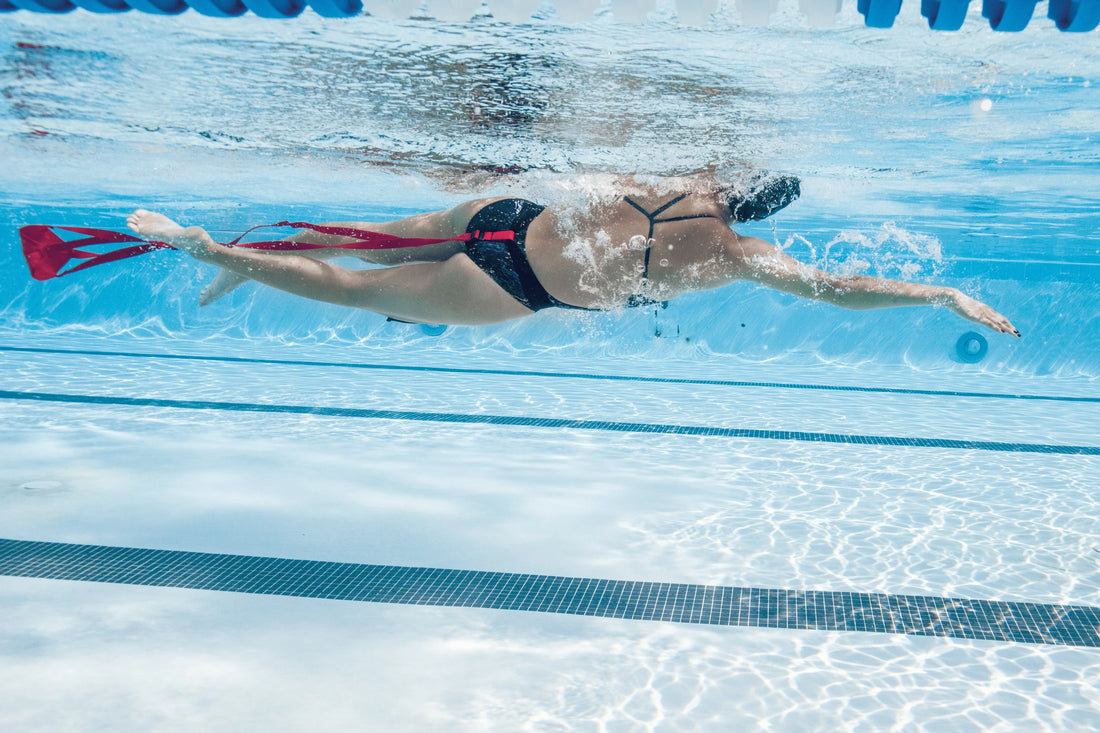
Swim Parachutes: How to Power Up Your Swimming
Share
Oliver Poirier-Leroy, yourswimlog.com
The swimmer’s parachute is a power development tool that increases resistance in the water. The result? Faster, more powerful swimming. Here’s the 411 on swim parachutes, including the best ones for swimmers.
There are fewer things more enjoyable in the water than feeling that surge of strength and power that is completely sport-specific. We develop a stronger pull. A more thunderous kick.
Here’s a breakdown of the benefits of swimming with a parachute, as well as a quick list of the best parachutes for swimmers.
Let’s do this!
Parachutes for Swimming: It’s a Drag!
Let’s take a closer look at this swim-specific resistance tool:
What is a swim parachute?
Simply put: it’s a piece of resistance that you attach to your waste with a little belt and let it drag behind you.
Because it doesn’t interfere with your swimming technique you can increase load without compromising form.
Swim parachutes are different from other common power development tools like power towers or swim tethers as you can swim the full length of the pool.
Does a swim parachute help you swim faster?
Yes…but not right away.
One of my favorite things to do with in-the-water resistance training is to pair up swimming under load (whether with a parachute, DragSox, or against a resistance band) with all-out speed (sometimes speed assisted with a tube pull or fins).
This is a form of post-activation potentiation specific to swimmers, a proven method of improving speed.
More noticeably, your stroke feels incredibly smooth and fast once you dump the gear and go back to regular swimming.
Training under resistance helps to reinforce better swim technique—especially in the front quarter of the stroke where the catch is taking place. Your body is smart—the added load will force it to find ways to be more efficient to move through the water.
Is it weird/hard swimming with a parachute?
You get used to it pretty quickly!
One of the fun things about them is that you can kick properly (generally speaking—once in a while you will get your feet tangled in the strap if you are cork-screwing in the water and kicking side-to-side instead of straight down).
Flip turns are doable, and the parachute can be worn while swimming all four strokes.
Swim parachutes come in different sizes. If you are new to resistance training start out with a smaller size and level up as you get stronger in the water.
What’s the best way to train with parachutes?
Like drag suits and other forms of resistance training, parachutes should be used for shorter periods of time in the water. It is resistance training, after all.
In the same way that you wouldn’t go to the gym and do 5 sets of 300 reps of bench press, avoid swimming for extended bouts with a parachute.
Use it for targeted stretches—25s and 50s at a time with ample rest—to refine your technique and increase your strength and power in the pool.
The Best Parachutes for Swimmers
Parachutes are by and large fairly similar in design and function (with one exception that I will detail last in our list of parachutes).
Most of the major swim brands including Speedo and FINIS make them with some slight differences between each.
1. FINIS Swim Parachute
⭐ Best overall swim parachute

The best parachute for swimmers in my chlorinated opinion is the FINIS series of chutes. While I am generally a fan of FINIS swim gear, I’ve had a couple of their chutes over the years and not only are they easy to use, but they have been remarkably durable.
The cord extends out to 6 feet in length. This means the chute will deploy far behind your feet. You can shorten the length of the cord, as well.
Unlike the mesh material that some parachutes are made of that allow water to seep through, the FINIS Swimmers Parachute is made of material that will basically catch the water and ball it up like a big, heavy snowball. The belt is made of a durable nylon that you clip around your waist.
The FINIS chutes come in different sizes or levels of difficulty. The smaller the chute, the less drag gets created behind you. The harder is the navy blue one, with a 12″ diameter, while the red is the “easy” one, opening up at a width of 8″.
Click here for the original article.



